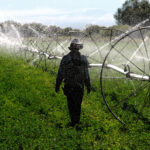Using drones and Google Earth imagery, archaeologists have discovered a 4,000-year-old network of earthen canals in what’s now Belize. The research published Friday in Science Advances shows that long before the ancient Maya built temples, their predecessors were already altering the landscape of Central America’s Yucatan peninsula. The ancient fish canals were used to channel and catch freshwater species such as catfish. These structures were used for around 1,000 years — including during the “formative” period when the Maya began to settle in permanent farming villages and a distinctive culture started to emerge. Using drones and Google Earth imagery, archaeologists have discovered a 4,000-year-old network of earthen canals in what’s now Belize. The research published Friday in Science Advances shows that long before the ancient Maya built temples, their predecessors were already altering the landscape of Central America’s Yucatan peninsula. The ancient fish canals were used to channel and catch freshwater species such as catfish. These structures were used for around 1,000 years — including during the “formative” period when the Maya began to settle in permanent farming villages and a distinctive culture started to emerge. AP Technology and Science







